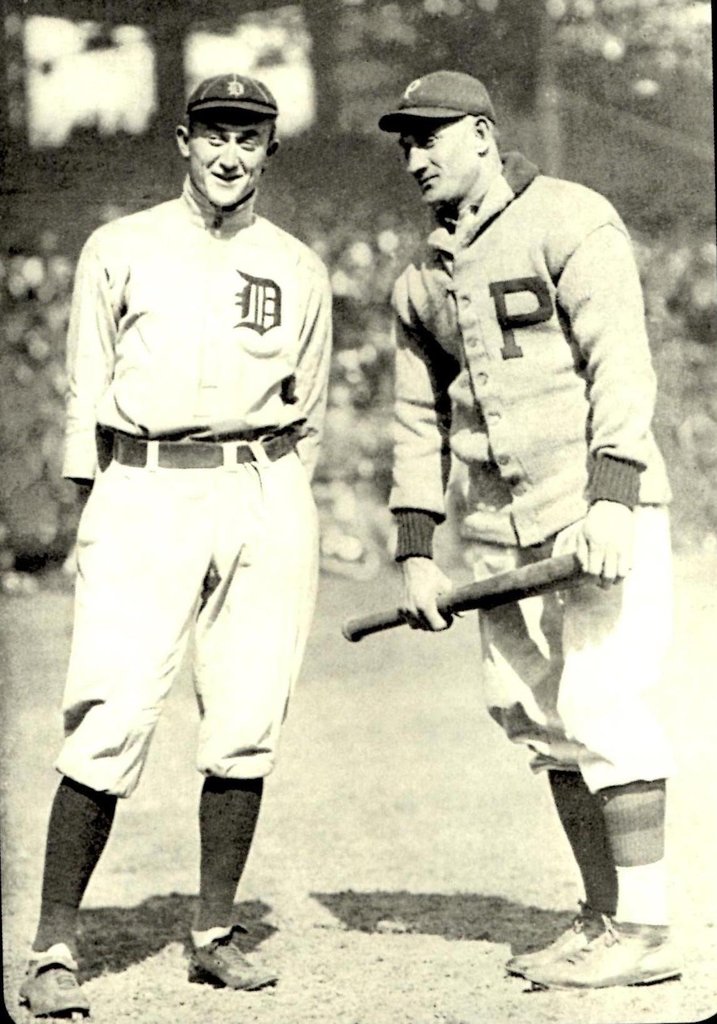A cultural history of the 3000 hit club

OK the title of this blog post is overselling it, but hey it’s the internet and legal academia so whaddaya gonna do as Tony Soprano and Donald Trump would say.
The post is occasioned by an outraged email I received from a fellow Detroit Tigers’ fan about the cowardly, pusillanimous, dastardly, un-cricket-like, and definitely not Old School decision by the Nefarious Highlanders of Gotham to intentionally walk Miguel Cabrera in the 8th inning of today’s tussle at Briggs Stadium with the Motor City’s Bengals, thus depriving the unusually large crowd that had gathered to watch the Thursday pre-prandial affair of their final chance to witness Miguel Cabrera’s 3000th career safety. (BTW Cabrera had been walked intentionally exactly once in this decade prior to that plate appearance).
Sorry I’ve been looking at very old newspaper stories, to research the following question: When did reaching 3000 hits become a Big Deal?
The answer, it turns out, is kind of complicated.
I looked at archived versions of the New York Times for the purposes of this epic research project, and discovered the following:
By the time Stan Musial got his 3000th hit on May 13, 1958, it was definitely a Big Deal. We can tell this because that day’s story in the Times — which went to press before The Man became the seventh* major leaguer to achieve this milestone, has a story about him getting his 2,999th hit the night before (“Musial Registers 2999th Safety as Cardinals Defeat Cubs 6-4”).
It had been 17 years since a player got to 3000. In June of 1942 Paul “Big Poison” Waner recorded this feat, and the fact is duly noted in the Times the next day.
Now things get interesting (or “interesting” for all you LGMers who use “sportsball” non-ironically).
Sam Rice retired at the end of the 1934 season with 2,987 hits, which seems odd in retrospect. Although Rice was very old — 44 — he did record 98 hits in his last season, and was still a respectable replacement level player, so why didn’t he come back for at least a few weeks at the start of the next season to ensure his Baseball Immortality?
The answer it turns out is that for quite awhile nobody paid much if any attention to getting 3000 hits. The previous three players who did it — Eddie Collins in June 1925, Tris Speaker a month earlier, and Ty Cobb in 1921 — didn’t garner a mention in the Times for this achievement, even though the Times had extensive baseball coverage every day of the season throughout this time period.
That seems a bit strange, given that the first* two players who got to 3000 hits — Honus Wagner and Nap Lajoie, in June and September of 1914 — did have these statistical feats written up as the lead stories in the Times’ baseball coverage for those particular days.
I suppose the solution to this puzzle is probably something as simple as the editor of the NYT sports page in the teens being a baseball stats fan, while later editors were not, at least until the 1940s, and the invention of 3000 hits as a paradigmatic career milestone didn’t really take place until the 1940s and 1950s.
Anyway, I hope someone else enjoyed this extremely trivial historical pursuit.
*Cap Anson is now credited with 3000+ hits, but this is based on a modern reconstruction of his career stats, which counts his time in the National Association as part of his major league record, when that wasn’t counted as part of the official major league record until the middle of the 20th century. Also he was credited with all his walks counting as hits in one season in the 1890s. Also he was a terrible racist so I’m cancelling him, under strict orders from my Critical Race Theory overlords.
ETA: The Times did have a story about Cobb’s 4000th hit in 1927.


